how to clean bamboo steamer
Using a bamboo steamer basket to steam delicious Asian meals and vegetables is not only one of the best ways to cook; it is one of the healthiest.
If you would like to know more about cooking with a bamboo steamer and how to maintain it in tip-top condition, please read on.
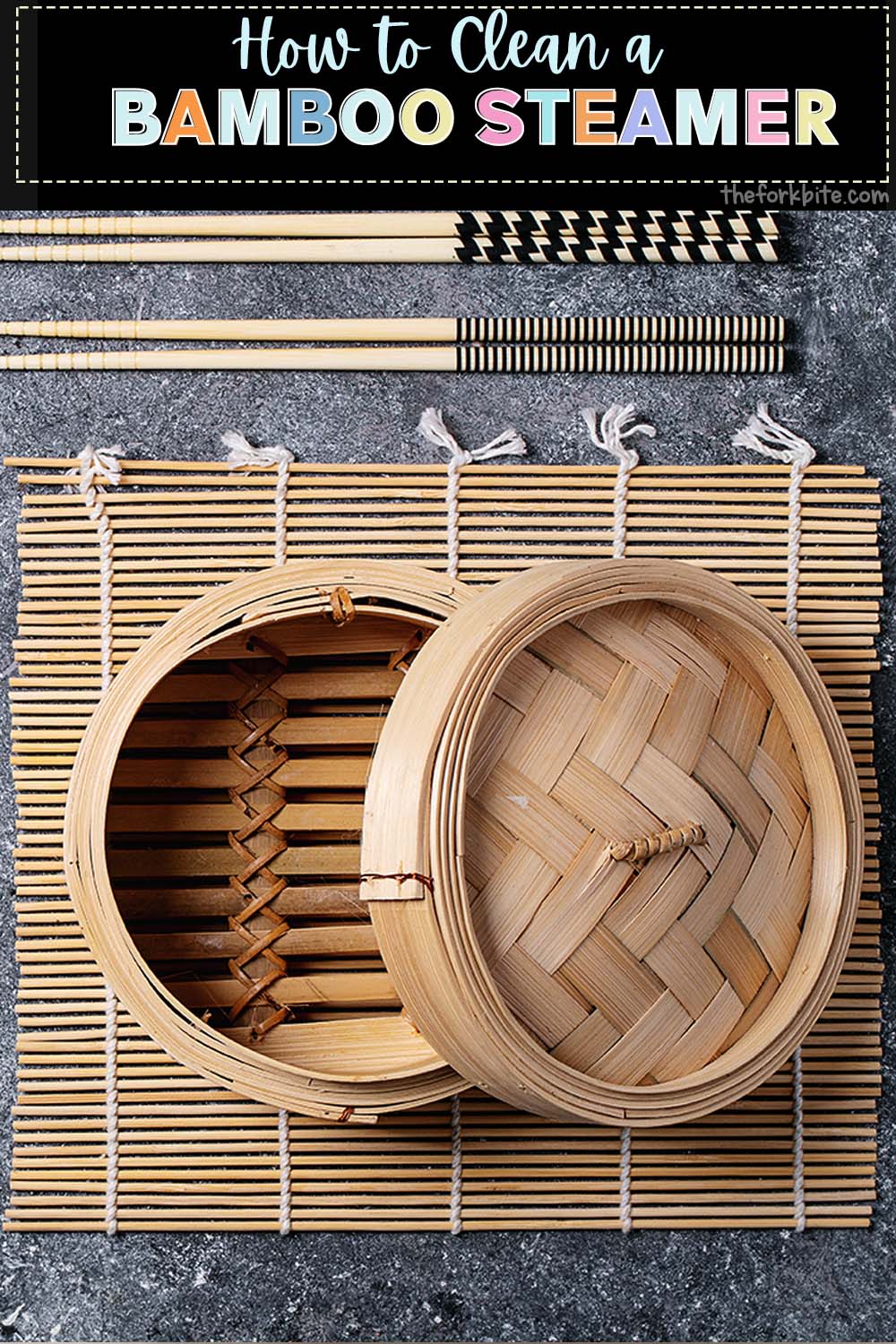
Jump to:
- Bamboo steamers explained
- How to use a bamboo steamer
- How to clean a bamboo steamer, in 4 natural ways
- How do you get the smell out of a bamboo steamer?
- How to deal with mold
- Useful tips for filling the steamer basket
Other great things about bamboo steamers are that they are so simple to use and cheap to buy.
Being made out of a natural product like bamboo means they need to be washed after each use because it's important to keep them meticulously clean.
But hey, we're only talking a few minutes, and the benefits far outweigh what only a tiny chore is.
By reading on, you will find out how best to quickly rid your bamboo steamer of any food or odors and thus keep it in prime condition for many years to come.
Bamboo steamers explained
No home kitchen should be without a bamboo steamer. Made from interwoven strips of bamboo formed into a "pan-like" basket, these steamers originated in China thousands of years ago.
You'll be amazed at how easy and quick it is to make the most delicious dishes with them.
To enable the cooking of numerous dishes, bamboo steamers can be stacked on top of each other, allowing the steam to rise right the way through the stack, so each layer is cooked simultaneously.
Things like Chinese dumplings and bao buns are but two of the many dishes you can cook to perfection with a bamboo steamer. I also use this steamer when cooking sticky rice.
A bamboo steamer is the best utensil to use when cooking bao buns.
Whereas metal steamers allow condensation to build upon their surfaces, bamboo steamers absorb much of this moisture resulting in the lightest and fluffiest buns.
How bamboo steamers are constructed.
As the name suggests, bamboo steamers are constructed using bamboo. Buy yours now before those pesky Giant Pandas eat up all the bamboo, and there's none left for making more steamers.
Each basket is created by weaving bamboo strips together into a ring. You can watch how the steamer is made here.
The base is also made using narrow bamboo strips, interwoven to support the food placed in them and allow steam to pass through.
The basket has a lid that is used when cooking a single tear in a single basket but is discarded when stacking steamers, in which case only the steamer on top has its lid positioned.
They are designed to sit atop a wok or pan boiling water, allowing the hot steam released from the surface of the boiling water below to funnel up through them.
Typically, hot steam has a temperature of approximately 100°C or 121°F.
As this steam rises and envelops the food inside the steamers, it gently cooks it, trapping all the essential nutrients inside rather than frittering them away as when immersed and boiled in water.
Bamboo steamer baskets are purposely designed to be stacked, enabling you to cook several tiers of food simultaneously.
If you've never tried cooking with bamboo steamers, you don't know what you're missing. Buy one (or more) and give it a try. You're sure to be delighted with the results.
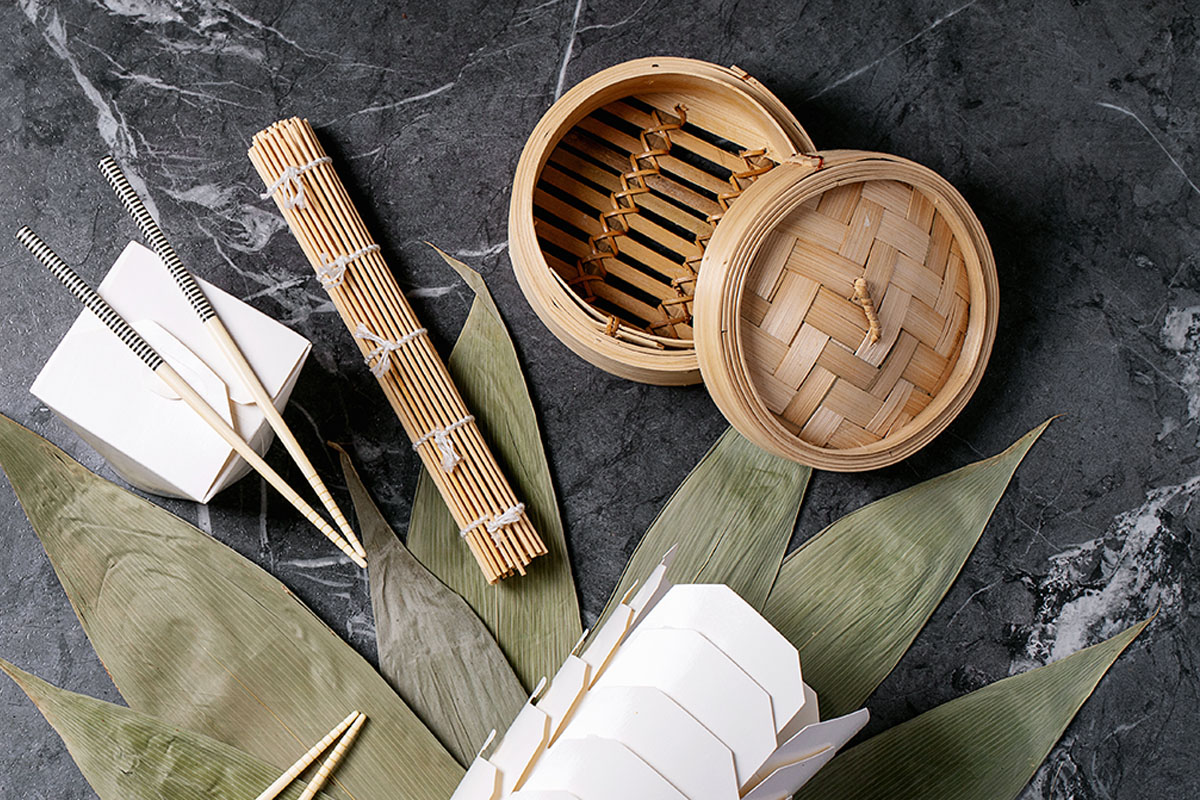
How to use a bamboo steamer
- First, you need a panful of boiling water, which once boiling you then turn down to a simmer.
- Then, locate the steamer on top of the open pan as if it was a lid.
The steam will then permeate up and through the bamboo steamer, cooking the contents as it does so.
The holes in the intertwined bamboo allow the steam to escape, ensuring that things like the pastry of bao buns or dumplings don't get too soggy.
They will keep their form., their texture, and their deliciousness. If you would like to see a video of steaming in action, please click here.
Why you should clean your bamboo steamer
Okay, you know that bamboo steamers are made to allow hot steam to pass through them to cook the food they contain.
Bamboo is, of course, an organic and completely natural material.
However, the steam can still result in bits of food sticking to the bamboo.
To keep your steamer hygienically clean, it needs to be cleaned thoroughly after each use so that when you come to cook with it next time, it's as clean as when it was new.
The way to minimize the cleaning of a bamboo steamer
There is an adage that says prevention is better than cure, which is certainly the case for bamboo steamers.
The best method of preventing food from sticking to the bottom of your bamboo steamer basket is to line it with a sheet of bamboo steamer liner or parchment waxed paper.
If you don't want to go through the hassle of especially buying parchment or waxed paper linings, you can always use lettuce or cabbage leaves as an alternative.
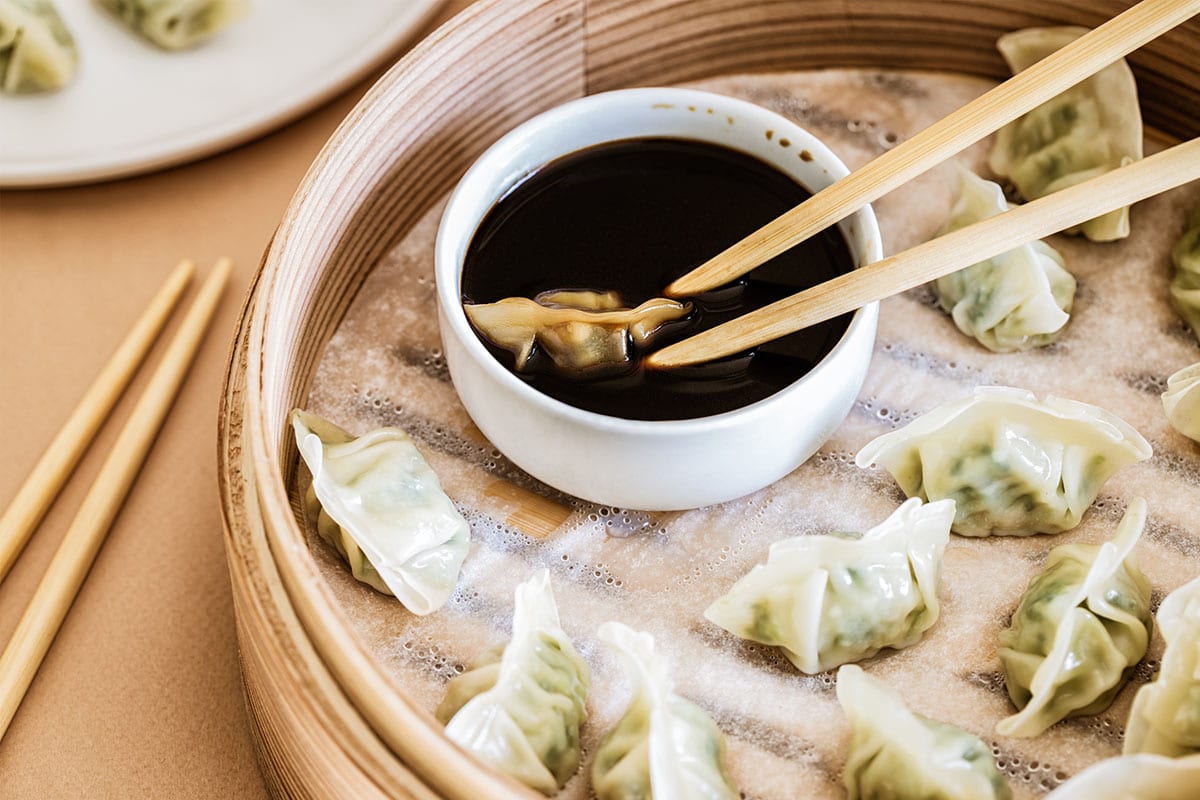
Clean your bamboo steamer after each use – steps to follow.
To prevent having to deep clean your bamboo steamer, which can cause damage, it's best to give it a quick clean after each use.
Here's how:
- Hold the steamer under the hot water tap and scrub the steamer firmly but gently with a soft nylon brush.
- Don't scrub too hard, and don't forget to clean the steamer's lid as well.
- When you've removed any remnants of food, give the steamer base, and lid a quick rinse under the hot water tap, then set them aside on your drainer to dry.
- Once they are dry, store them in a cool, dry location.
Helpful tips:
Don't store your bamboo steamer in a plastic container.
If you do, any moisture that has been left on the steamer components might cause condensation, which could then encourage the growth of mildew and mold.
The other thing to be wary of is not to store any items on top of your bamboo steamer.
The weight could cause the bamboo to weaken, which may then lead to it cracking.
How to clean a bamboo steamer, in 4 natural ways
As bamboo steamers are made from natural, organic bamboo, it makes good sense to clean them using natural, organic products.
Here are four ways you can do so using materials you probably already have to hand.
Method 1 Using a fresh lemon
You may not be aware, but lemon is a wholly natural cleaning agent. It has a pleasant aroma, so many commercially made soaps and detergents use it in the list of ingredients.
It is not overly abrasive and is one of Mother Nature's natural disinfectants.
It's also straightforward to use as there is no need for cloth.
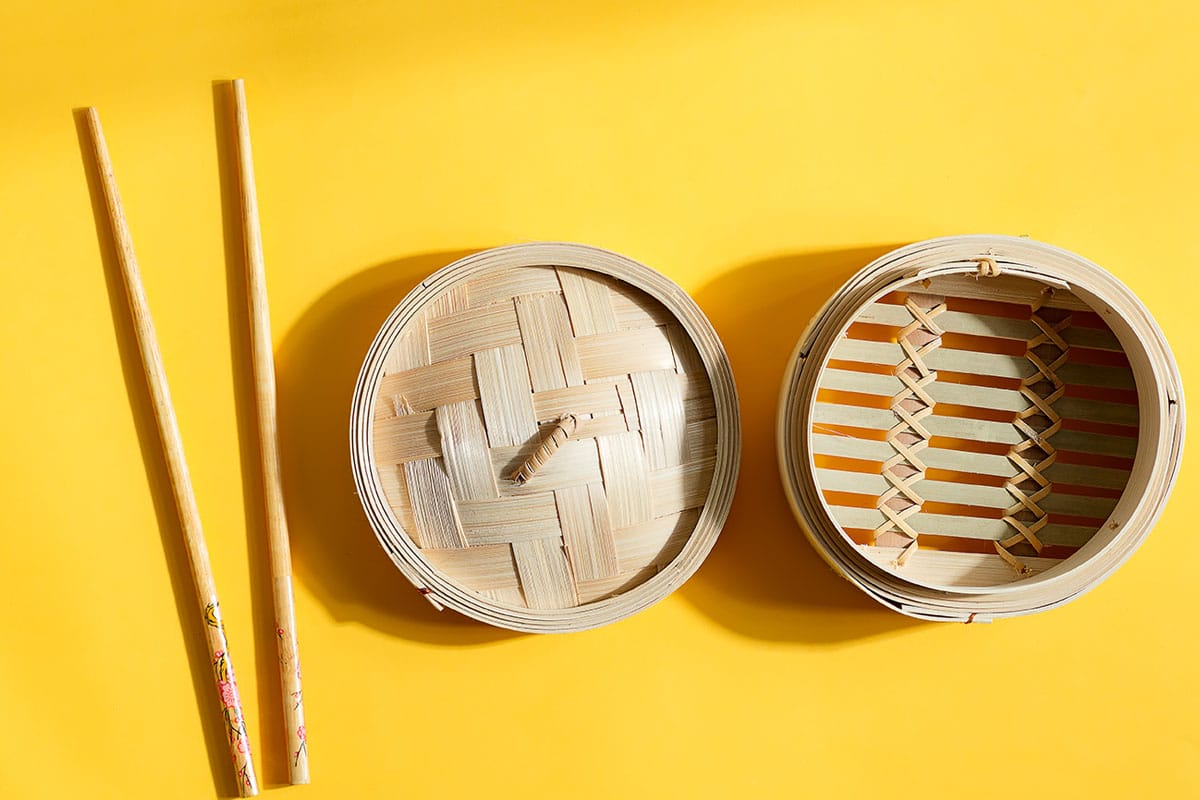
Follow these simple instructions:
- Cut a lemon into wedge shapes and wipe the exposed flesh of the wedges over all surfaces of your bamboo steamer, including the lid.
- Once you've done this, place the steamer with its lid in position over a pan of simmering water, and steam empty.
- Rinse under hot running tap water and set aside to dry.
*** This method also works using white vinegar.
Method 2 Using a teabag
Teabags are not just for making tea or beer (take a look at this article on the secondprofessionbrewing.com website about using Lychee black tea to infuse a unique flavor into beer); you can also use them for cleaning your bamboo steamer.
Here's how:
- Take a black tea teabag and soak in hot water for a few seconds.
- Lightly rub the bag over the surfaces of the steamer – don't be too heavy-handed, or you'll split the bag. Rubbing gently but firmly will also get rid of any food residue and bacteria.
- When done, rinse the steamer with warm water to wash off any remaining tea.
Method 3 Using baking soda
You might already know that baking soda makes an excellent cleaning agent. It works well to draw out moisture and any odors and is a very effective way of cleaning bamboo steamers.
Here are the steps to follow:
- Take the baking soda and give your bamboo steamer a liberal sprinkling.
- Set it aside for a few hours to allow the soda to do its work.
- Rinse the steamer clean of baking soda under the hot water tap and leave to dry.
Method 4 Using a nylon brush
There's nothing like returning to basics with the tried and trusted good old scrubbing method.
However, bearing in mind that bamboo steamers are made from thin strips of bamboo, harsh scrubbing could cause some damage, so I recommend using a soft nylon brush.
- Fill a bowl with hot soapy water and gently scrub the bamboo steamer in it using a nice soft nylon brush. Although the nylon bristles are relatively soft, they are still stiff enough to clean the basket.
- Slot the steamer into position over a pan of simmering water to steam clean.
- Finally, remove the steamer, rinse clean with cold water, and set it aside to dry.
You should clean Brand-new bamboo steamers before use.
When you buy a new bamboo steamer, it's always a good idea to clean it before you use it.
It might have some residue left over after the manufacturing process, or it will probably have picked up some dust in storage or while on display.
-
- Wash your steamer using hot soapy water and a soft cloth.
- Rinse thoroughly and then immerse in a bowl of clean, hot water and let it soak for approximately 30 minutes.
- When you've finished soaking it, pop the steamer (with its lid in place) on top of a pan of gently boiling water and steam clean for another 30 minutes. During this time, keep the level of water in the pan topped up.
- Set aside to air dry, and once that's done, it will be hygienically clean and ready for use.
How do you get the smell out of a bamboo steamer?
Being made of natural bamboo, which is a porous wood, your steamer will tend to absorb the smell of some of the things you steam in it.
If you find it takes on a discernable smell you want to get rid of, it's quite easy to do.
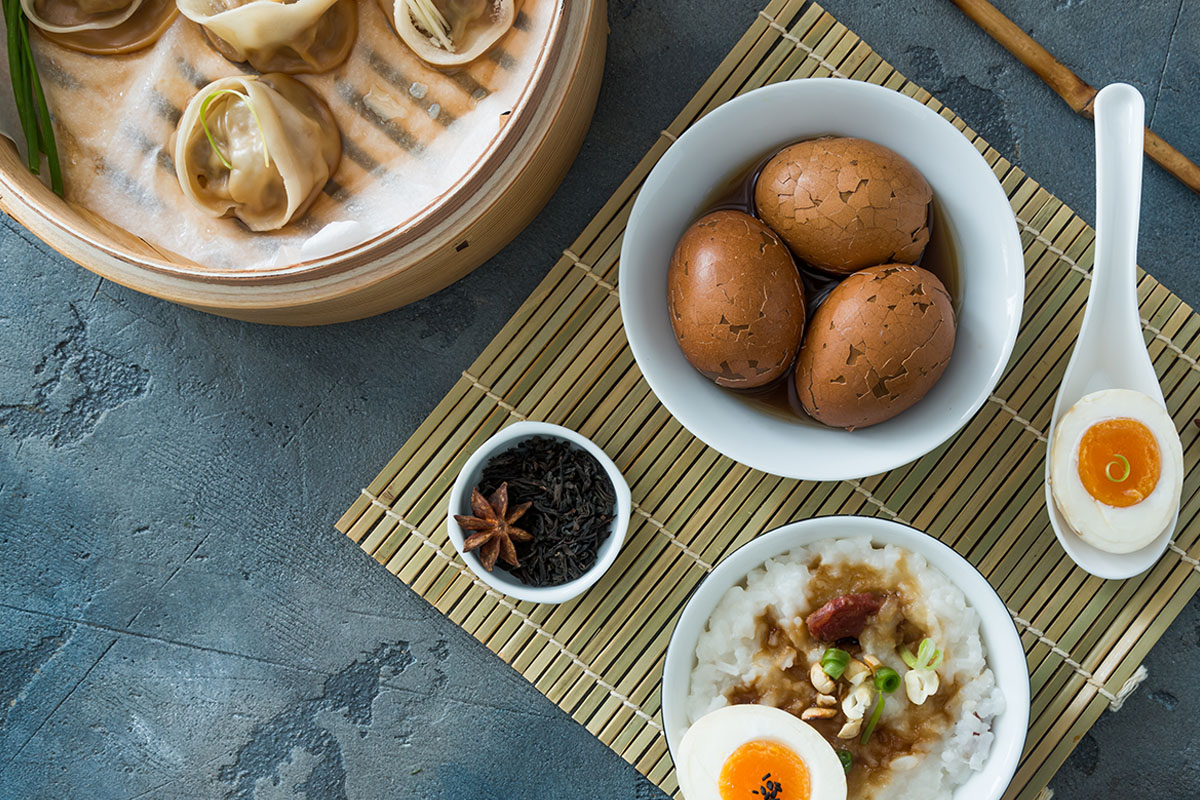
Here's how:
-
-
- Mix a 2:1 solution of water and white vinegar
- With a soft brush (like a pastry brush), gently coat all inside surfaces of the steamer with the water/vinegar solution.
- Rinse clean under the hot water tap.
-
This is usually enough to rid steamers of any lingering smells.
If the odor is still there, you need to go to the next step.
-
-
- Place the steamer atop a pan of gently boiling water.
- Cut a lemon in half and put both pieces into the base of the steamer.
- Put the steamer lid in place.
- Allow the lemon-enhanced steam to permeate through the steamer for 15 minutes.
- Remove the steamer from the pan, set it aside, and allow it to cool.
- Once thoroughly cooled, remove the pieces of lemon and rinse the steamer with its lid in hot water.
- Leave to air dry, and when finished, your steamer should be as smell-free as when you bought it.
-
How to deal with mold
The last thing you want is your bamboo steamer to develop mold. It is, after all, a cooking implement, so mold is an absolute no-no.
But fear not. Fixing mold is not a big problem. Follow the steps below, and your steamer will soon be as good as new.
-
-
- The best way to remove mold is to take a nylon brush and gently scrub the steamer with lemon oil or a 2:1 water-vinegar solution.
- Once you've removed all of the molds, rinse the steamer under clear, running hot water, and allow it to air dry.
-
The right way to use a bamboo steamer
As I mentioned earlier, bamboo steamers are relatively cheap to buy, and they are a simple way of making delicious dishes in just minutes.
Rather than boiling away all the nutrients and vitamins of the food you're preparing, you lock in all of the essential nutritional elements by steaming.
And it's not just vegetables you can steam. You can cook complete meals, including chicken, dumplings, and fish.
People who often don't eat boiled vegetables find that steamed vegetables become an instant favorite once they try them.
If you're new to bamboo steamer cooking, you'll be pleasantly surprised at how easy it is – just follow the steps below.
1 Choose the right pot or pan
I like to use a nice deep pot or pan with a steamer basket ring that will fit nice and snuggly.
It can't be too small, or it will fall inside the pan, and it shouldn't be too loose that just jogging it slightly would be enough to upend it.
The idea is to ensure that the steamer basket is suspended snuggly above the waterline of the pan beneath it.
Whatever you do, you mustn't let the basket touch the water.
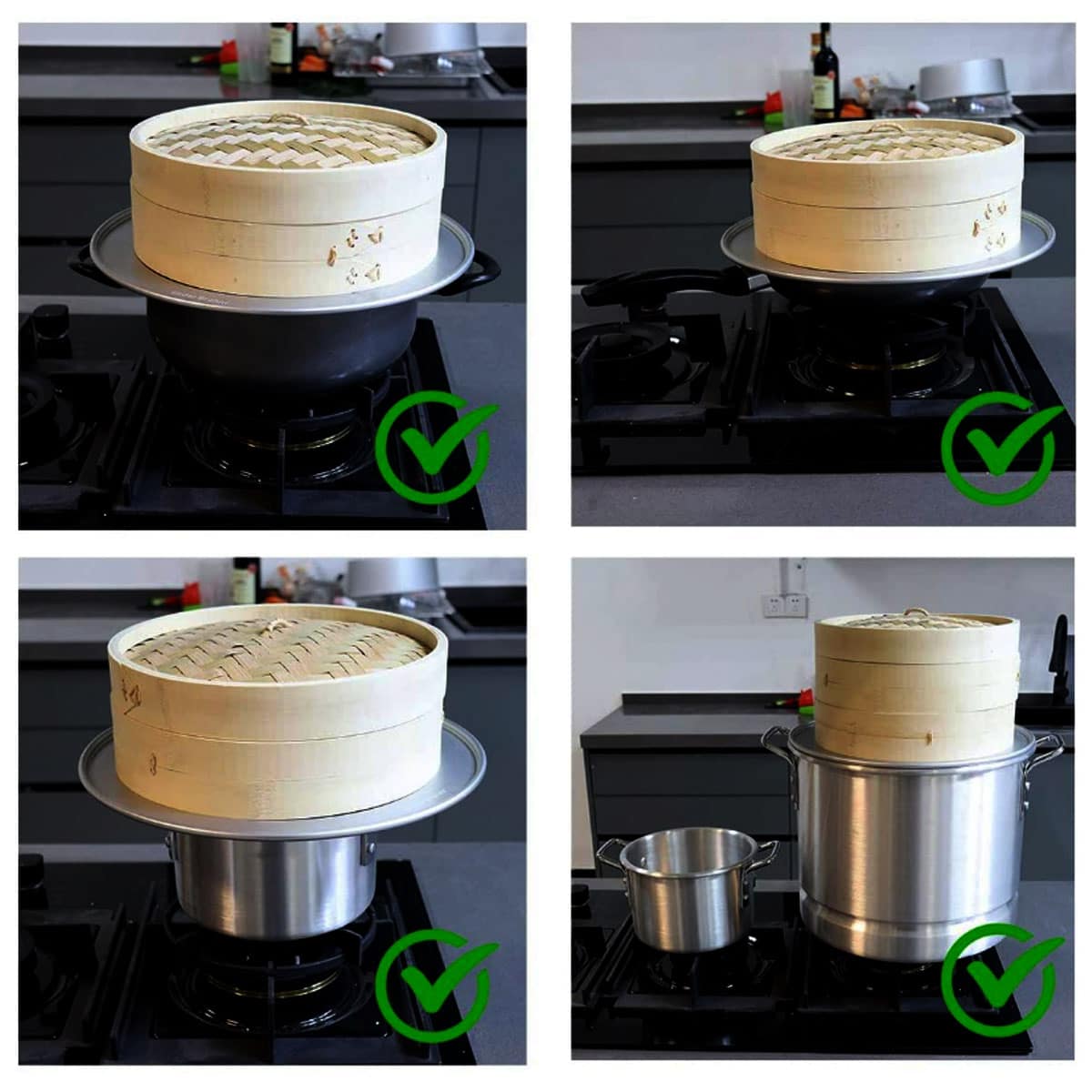
2 Bring the water to a boil
Fill a pan or pot with enough water so that there is approximately an inch and a half between the water's surface and the steamer's underside. Bring the water up to a boil.
The trick is finding a balance whereby the water won't completely evaporate nor directly contact the food. You're steaming the contents, not boiling them.
Fill the pot with water to a depth about half an inch below the bottom of the basket and bring it to a boil.
You want the water level deep enough not to run dry during the cooking period and not so deep that the water reaches into the basket and boils the food instead of steaming it.
3 Arranging the food to steam evenly
Arrange the food into the basket of the steamer, making a note of the helpful tips given below.
Once the water in the pan or pot is boiling, position the steamer basket on top, put the lid in place, and cook until the food is ready.
Cooking time depends on the size and thickness of the food being steamed.
Veggies cook quite quickly, especially if you prefer them al dente; fish fillets take approximately 10 minutes, pieces of chicken can take anywhere from 20 to 45 minutes depending on their size.
Check that the water in the pan doesn't completely evaporate. Top it up as necessary.
Useful tips for filling the steamer basket
Food items should be loaded in a single layer with a bit of air space around each item to allow the steam to circulate and cook everything evenly.
Stacking your bamboo steamers
Bamboo steamers are specially designed for stacking to enable you to cook the various components of your meal simultaneously.
Denser foods that take longer to cook should be placed on the lower baskets, closer to the steam source, with items that need the least cooking time should be placed inside the top steamer baskets.
What to line bamboo steamer with?
Some foods have more of a propensity to stick to the bottom of the steamer basket – for example, dumplings and bao buns.
The easiest way to prevent anything from sticking is to line the basket and place the food on the lining rather than directly on the bamboo itself.
It makes cleaning up afterward so much easier.
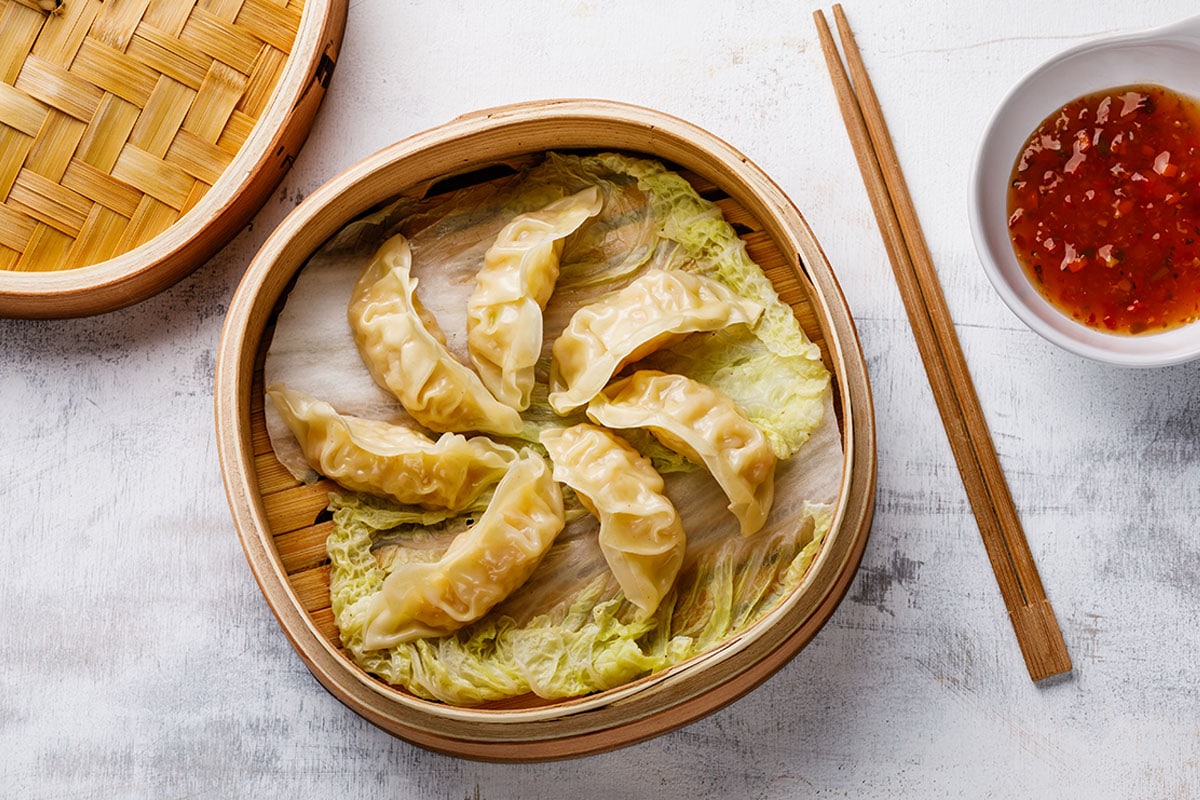
Choices of liners include:
-
-
-
- Lettuce or cabbage leaves
- Cheesecloth
- Corn husks
- Aluminum foil
- Parchment paper
-
-
You can also use small plates if they fit inside the steamer baskets.
Remember that the whole point of steaming is to allow steam to rise through the basket or a stack of baskets.
You can buy pre-cut liners which are already perforated or, if using un-perforated material, perforate it yourself.
Cooking complete
Once the food is cooked to your liking, remove the pan from the heat, take off the baskets and remove the lid.
When doing this, lift the lid away from you, careful not to get scolded by any escaping steam.
Washing your bamboo steamer
When everything is served up, wash your bamboo steamer in hot soapy water, rinse thoroughly, and set it aside to dry.
Don't try putting it into a dishwasher made from bamboo; these steamers are not dishwasher safe.
More useful tips
If you're stacking food that all takes approximately the same amount of time to cook, it's a good idea to swap the baskets around midway through cooking so that the contents of each steamer cook evenly.
To add a little flavor kick, you can spread a little garlic, ginger, rosemary, thyme, or any other herbs and spices, amongst the food to imbue the rising steam with their fragrance.
Why bother with bamboo steamers
If you want to steam your food, bamboo steamers are the perfect tool to use.
They are inexpensive, simple to use, and the healthiest way of eating food with most of its nutrients and vitamins intact.
Keeping all that nutritional goodness available is not just good for your health. It also makes the food taste lovely too – as Mother Nature intended.
It's so much better than boiling, whereby most of the nutrients are absorbed into the cooking water, which ultimately gets thrown away.
It also helps to cut back on the quantity of the oil that you might otherwise use when cooking. Whereas things like frying and stir-frying require oil, steaming does not.
Last but not least, bamboo is also one of the most eco-friendly materials for kitchenware, and if you don't use it, the Giant Pandas will.
Bamboo is a type of grass. It is one of the fastest-growing plants on the planet. If you look after your bamboo steamer, it will last you many years.
When eventually you might come to throw it away, you're safe in the knowledge that it is 100% biodegradable – in other words, it's great for the environment too.
Why shouldn't I use a metal steamer instead?
Generally speaking, you can use a metal steamer instead of one made from bamboo in many instances.
Being made from metal and metal being a much more efficient conductor of heat, any food that comes into contact with it tends to broil. It means it cooks faster, and it's not 100% steam cooking.
For the most part, you can use a metal steamer basket, in the same way, to steam mostly the same foods as you would with a bamboo steamer.
Bamboo is so much more user-friendly, and to my mind, produces far better results. But it also heightens the chance of food sticking to it.
A few tips for your bamboo steamer cooking
Tip 1
The time it takes to cook what you are steaming will depend on what you are cooking and whether or not you are stacking.
You should check each item from time to time during the steaming process to see how they're progressing.
Don't check too often, though, because much steam escapes and has to be built up again each time you do.
Tip 2
When you stack steamers, remember that as the steam rises, it cools.
Tip 3
Items of food that need longer to cook should be placed at the bottom of the stack, where the steam temperature is highest.
Tip 4
I always dampen my bamboo steamers before cooking with them by immersing them in hot water for about 15 minutes.
It helps to prevent them from burning when coming into contact with the hot pan or wok below.
Tip 5
As food steams in a stack, sometimes flavors and colors drip down onto the food inside the steamers below.
Tip 6
From a food health point of view, the internal temperature of any chicken being cooked must reach 75°C (165°F) – it's crucial.
But you don't want to overcook it, so it's a good idea to get yourself a meat thermometer, so you know exactly when it's ready.
Tip 7
The best way I've found to stop food sticking to the base of a steamer basket is to use liners made from perforated parchment paper. You can reuse them too.
Tip 8
To boost the flavor of the food you're steaming, you can add things like chopped cilantro stems, trimmings from ginger, or chopped scallions.
Using leftover trimmings in your steamer water is a win-win. You enhance the flavor of your cooking; you use up any waste, and you make your kitchen smell nice in the process.
how to clean bamboo steamer
Source: https://www.theforkbite.com/how-to-clean-a-bamboo-steamer/
Posted by: rodriguenother44.blogspot.com

0 Response to "how to clean bamboo steamer"
Post a Comment